- About
-
Research
- Agronomy and farming systems
-
Agricultural crop research
-
Research projects - agriculture
- About SASSA-SAI
- BioBoost
- Biomass Connect
- CTP for Sustainable Agricultural Innovation
- Climate Ready Beans - workshop presentations (March 2022)
- Crop diversity HPC cluster
- Designing Future Wheat
- Final project workshop
- Get involved
- List of materials
- News and updates
- Partners
- Rustwatch
- The Sentinel Crop Disease Surveillance Network
- The research team
- UK Cereal Pathogen Virulence Survey
- UK wheat varieties pedigree
- Weed management - IWM Praise
- Crop breeding
- Crop characterisation
- Data sciences
- Genetics and pre-breeding
- Plant biotechnology
- Plant pathology and entomology
- Resources
-
Research projects - agriculture
-
Horticultural crop research
-
Research projects - horticulture
- Augmented Berry Vision
- BEESPOKE
- Boosting brassica nutrition in smart growing systems
- CTP for Fruit Crop Research
- Develop user-friendly nutrient demand models
- Egg laying deterrents for spotted wing drosophila
- Enhancing the nutritional quality of tomatoes
- Improving berry harvest forecasts and productivity
- Improving vineyard soil health through groundcover management
- Intelligent growing systems
- Knowledge transfer for sustainable water use
- POME: Precision Orchard Management for Environment
- RASCAL
- STOP-SPOT
- UV-Robot
- Crop science and production systems
- Genetics, genomics and breeding
- Pest and pathogen ecology
- Field vegetables and salad crops
- Plum Demonstration Centre
- The WET Centre
- Viticulture and Oenology
-
Research projects - horticulture
- Crop Science Centre
- Research Projects
-
Services
- Analytical Services
- Business Development
- Commercial trial services
- Membership
- Plant breeding
- Plant characterisation
- Seed certification
-
Training
-
Technical agronomy training
- Advanced crop management of bulb onions
- Advanced crop management of vegetable brassicas
- Advanced nutrient management for combinable crops
- Benefits of cover crops in arable systems
- Best practice agronomy for cereals and oilseed rape
- Developing a Successful Strategy for Spring Crops
- Disease Management and Control in Cereal Crops
- Incorporating SFI options into your rotation
- Protected Environment Horticulture – Best Practice
- Techniques for better pest management in combinable crops
- Crop inspector and seed certification
- Licensed seed sampling
-
Technical agronomy training
- News & Views
- Events
-
Knowledge Hub
- Alternative and break crops
-
Crop genetics
- POSTER: Diversity enriched wheat (2025)
- POSTER: Genetics of wheat flag leaf size (2024)
- POSTER: Wheat yield stability (2024)
- Poster: Traits for future cereal crops (2022)
- POSTER: wild wheat fragment lines (2022)
- POSTER: Improving phenotyping in crop research (2022)
- PRESENTATION: Plant breeding for regen ag
- Poster: Designing Future Wheat (2020)
- Crop nutrition
-
Crop protection
- POSTER: Understanding the hierarchy of black-grass control (2025)
- POSTER: Emerging weed threats (2025)
- POSTER: Disease control in barley (2025)
- Poster: Weed seed predation in regen-ag (2024)
- POSTER: Disease control in winter wheat (2025)
- POSTER: Mode of action (2023)
- POSTER: Inter-row cultivation for black-grass control (2022)
- POSTER: UKCPVS winter wheat yellow rust in spring 2025 (2025)
- Poster: Management of Italian ryegrass (2021)
- POSTER: UKCPVS winter wheat rusts - 2024/25 review (2025)
- POSTER: UKCPVS disease monitoring and the benefit to UK growers (2025)
- POSTER: Diagnosing and scoring crop disease using AI (2025)
- POSTER: Finding new sources of Septoria resistance (2024)
- POSTER: Fungicide resistance research (2024)
- POSTER: Detecting air-borne pathogens (2024)
- POSTER: Oilseed rape diseases (2024)
- POSTER: Fungicide resistance research (2024)
- POSTER: Improving chocolate spot resistance (2022)
- Poster: Pathogen diagnostics (2022)
- Fruit
- Regen-ag & sustainability
-
Seed certification
- POSTER: Wheat DUS (2024)
- POSTER: Innovation in variety testing (2024)
- POSTER: AI and molecular markers for soft fruit (2024)
- POSTER: Barley crop identification (2023)
- POSTER: Herbage grass crop identification (2023)
- POSTER: Herbage legume crop identification (2024)
- POSTER: Minor cereal crop inspecting (2023)
- POSTER: Pulse crop identification (2023)
- POSTER: Wheat crop identification (2023)
-
Soils and farming systems
- POSTER: Checking soil health - across space and time (2024)
- POSTER: Checking soil health - step by step (2024)
- POSTERS: Changing soil management practices (2022)
- Poster: Monitoring natural enemies & pollinators (2021)
- POSTER: Soil structure and organic matter (2024)
- POSTER: Novel wheat genotypes for regen-ag (2024)
- Video: New Farming Systems project (2021)
- Video: Saxmundham Experimental Site (2021)
- POSTER: Impact of prolonged rainfall on soil structure (2024)
- POSTER: Soil & agronomic monitoring study (2024)
- POSTER: The impact of rotations & cultivations (2024)
- VIDEO: Great Soils; soil sampling guidelines (2020)
- Poster: Soil invertebrates within arable rotations (2024)
- VIDEO: Soil health assessment (2021)
- POSTER: Saxmundham - modern P management learnings
- POSTER: Saxmundham - 125 years of phosphorus management
- Poster: Soil phosphorus - availability, uptake and management (2025)
- POSTER: Morley long term experiments (2025)
- POSTER: Exploiting novel wheat genotypes for regen-ag (2025)
- Video: Saxmundham Experimental Site (2021)
- Varieties
Alternatives to peat for horticulture
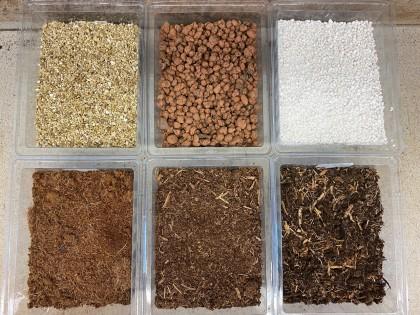
In the latest of our series of blog posts looking into farming on peat, Emma Smith and Ben Tea look at the alternatives to peat, with a ban on peat used in horticulture on the horizon.
Peat has long been a popular choice in horticulture due to its ability to retain water and nutrients, making it an ideal growing medium for plant growth. However, its extensive extraction and use has raised environmental concerns, prompting the search for sustainable alternatives.
In recent years celebrity gardeners and influencers have campaigned to protect the peatland peat bogs, raising the public’s awareness to the subject and consequently adding pressure to address these issues.
Some of the major issues with the extraction of peat include the release of large amounts of carbon dioxide to the atmosphere as greenhouse gases contributing to global warming and climate change, disruption of the ecosystems leading to loss of biodiversity and essential habitats and an increase in the risk of flooding and flow of water on the land.
In recent years there has been an adoption of peat reduced growing media mixes. However, Defra pushed harder and commissioned a consultation phase which originally indicated the use of peat would be banned completely by 2030. This has since been brought forward and current legislation states that the use of peat for retail use will be banned in 2024 and peat used for the professional market will be banned by 2026. There are some exemptions, for example specialised areas will have access to peat products until 2030.
To address these issues, the horticultural industry has been exploring a range of alternatives to peat (Figure 1), for example coir, a byproduct of coconut processing. Coir has emerged as a well-liked substitute, increasingly favoured due to its lightweight nature and effective water retention capabilities. Nonetheless, coir presents its own set of obstacles, particularly in convincing environmentally conscious individuals.
Coir is sourced and transported by ship over long distances before being further shipped within the UK on lorries. As a result, there is a potential risk coir could face similar problems like peat.
Wood fibre and bark-based substrates are also viable alternatives. These materials are often byproducts of the forestry industry and can provide adequate water retention and properties for good plant growth. Additionally, expanded clay pellets, perlite, and vermiculite are mineral-based options that can be mixed with other substrates to improve drainage by increasing the amount of air in a growing media mix.
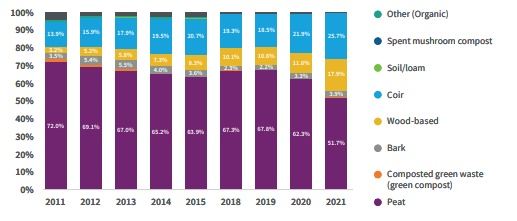
Figure 2. Total volume (%) of ingredients used in growing media in retail sector between 2011- 2021 (Growing media monitor report (HTA, AHDB, GMA, Defra), 2022)
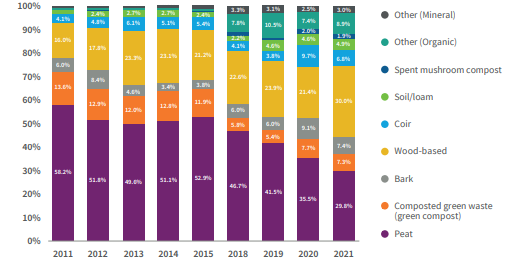
Figure 3. Proportion of professional growing media volume accounted for by different component (Growing media monitor report (HTA, AHDB, GMA, Defra), 2022)
Alternatives
The concept of using household and garden waste has been explored as an alternative. However, as noted by WRAP, in many instances the end material lacks consistency. There is no standardised method to process and/or store material at homeowner level or within local councils which adds layers of complexity in establishing uniform material.
It is also observed that any prior plant protection or herbicide products used in the homeowner’s garden may still contain active ingredients. This has adverse effects on subsequent growing material and therefore can affect future growing quality. Often there are pH issues and high sodium chloride levels found in this type of material making it also difficult to grow plants.
Farming diversification presents a valuable opportunity to source alternative materials for peat-free growing media. These farm-based materials can be utilised to support sustainable alternatives. Sheep wool can be processed into a valuable resource; it provides good water retention, helps improve soil structure, and adds organic matter to the mix. Similarly, Alpaca fleece has hydrophobic properties making it a potential component of growing media. Its ability to repel moisture can help increase drainage and prevent waterlogging.
Mixing both sheep and alpaca fleece has the potential to create bespoke mixes based on grower requirement, time of year and growing set up. Animal manure, when composted properly, can be a rich source of nutrients for plants. It adds organic matter, improves soil structure, and contributes to the overall health of the growing medium. Though it must be noted that the bi-products from livestock waste cannot be used in growing media where it is used in food production due to regulatory constraints.
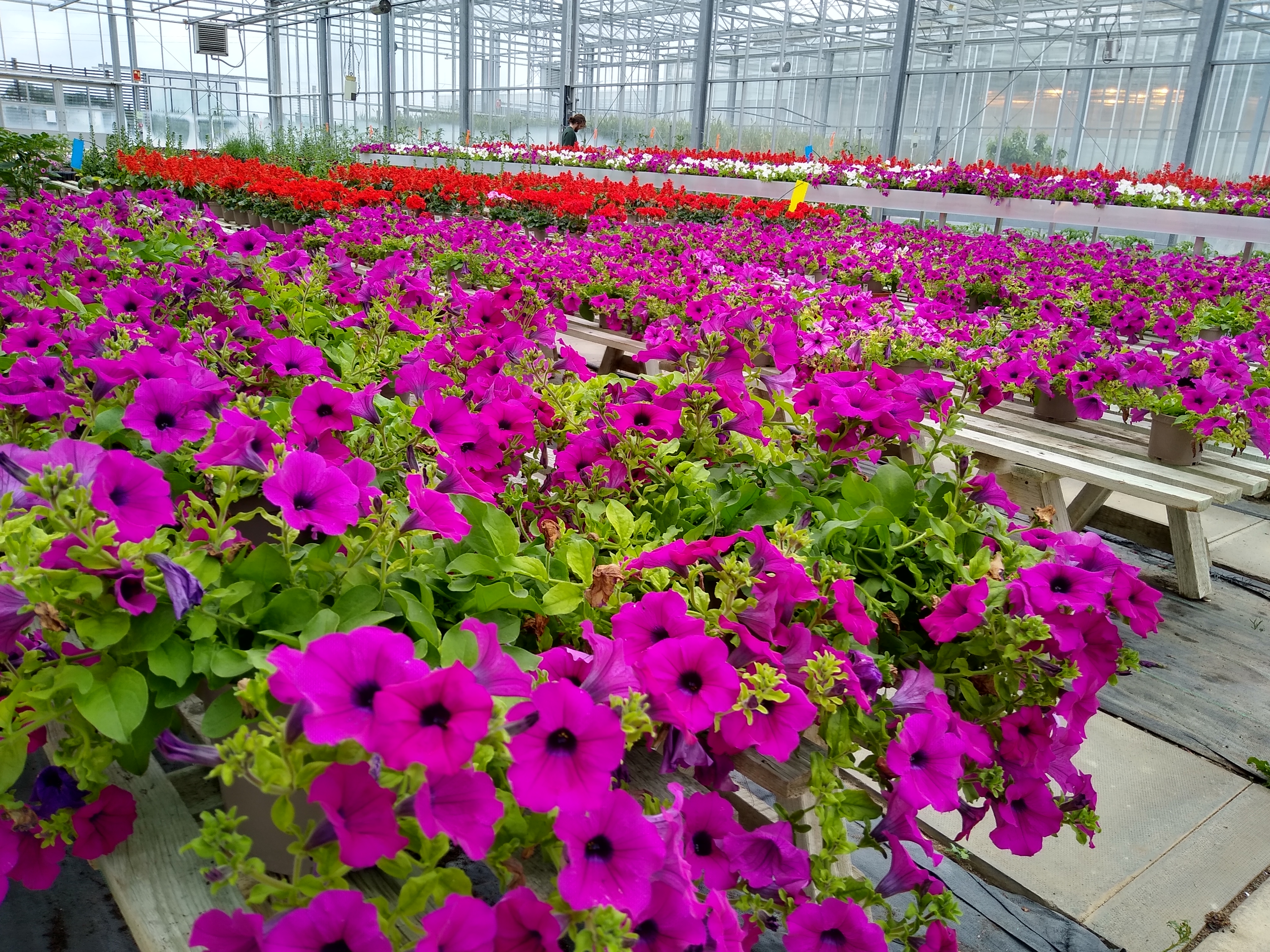
Figure 4. NIAB indoor seasonal glasshouse running spring trials looking at growing media formulations
Currently it seems that anything considered waste is being considered for growing media. The bulk material from anaerobic digestion has also been considered but, due to the processing needs and available quantities, this is unlikely to become a major component. One of the major limiting factors to peat free, and what made peat so popular, is nutritional content.
Aged peat is naturally low in nutrients making it a perfect starting material and, with its high cation exchange capacity (ability to hold/release nutrients), was able to hold and release nutrients. Some peat free materials can be high, to almost toxic levels, in nutrients and some materials can actually lock up nutrients meaning end-users need to add more fertiliser to compensate, resulting in additional cost and higher risks to the environment.
Biomass conversion
Biochar has also been considered as an alternative to peat for its environmental benefits; locking in carbon in the soil. It is a charcoal-like substance that is produced through the controlled process of pyrolysis, which involves heating biomass (organic materials such as wood, agricultural residues, and other plant matter) in the absence of oxygen. This process results in the conversion of the biomass into a stable form of carbon-rich material with a highly porous structure.
The use of biochar can also provide a range of potential benefits in its application, including soil improvement, nutrient retention, pH regulation, water management, microbial activity and carbon capturing.
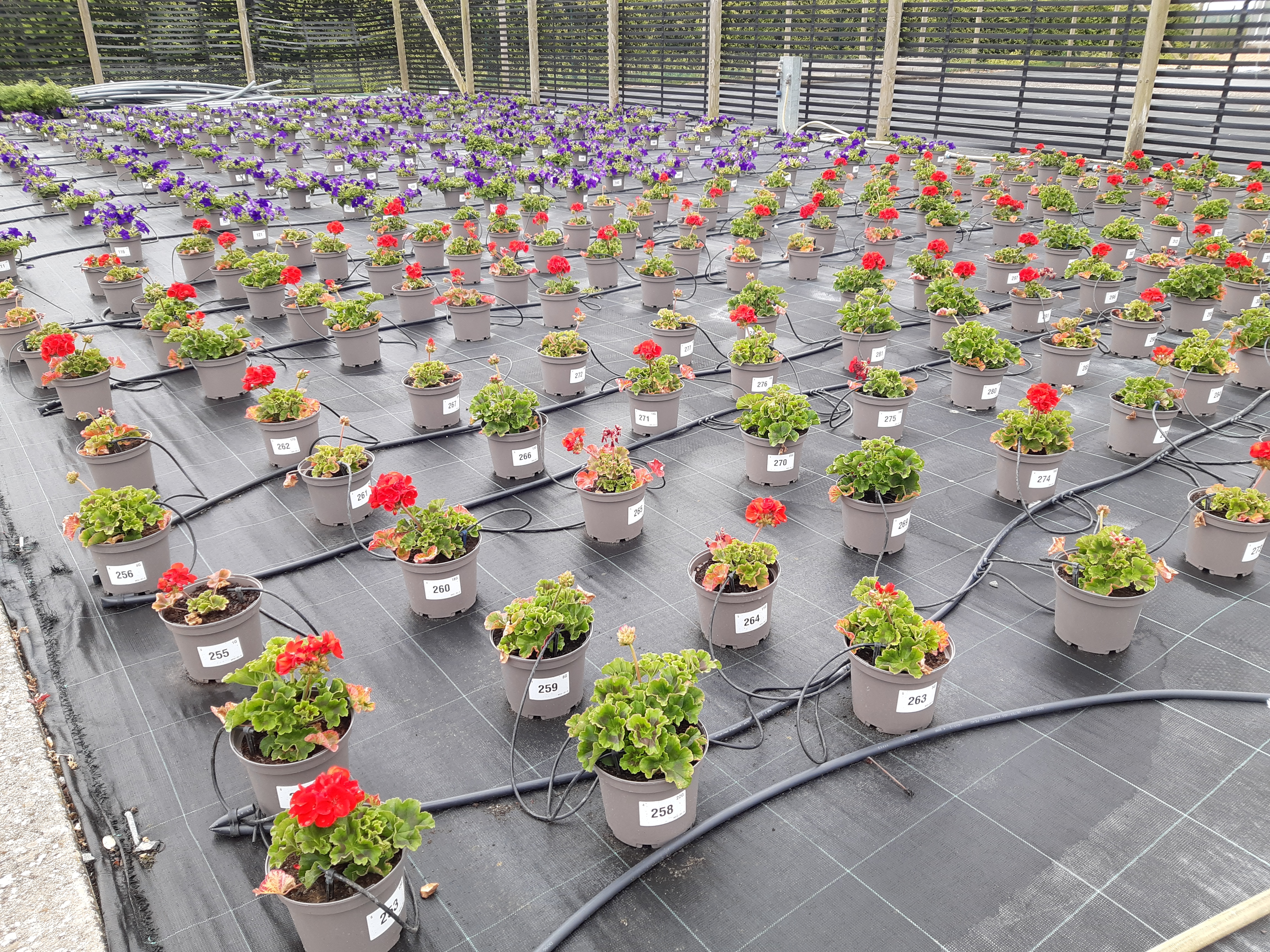
Figure 5. NIAB outdoor trials area
The need for peat-free alternatives is not a new subject and the Horticultural Trade Association in conjunction with AHDB, Growing Media Association and Defra showed the overall proportion of ingredients in growing media between 2011-2021 across the retail sector and professional sector (Figure 2), both show a reduction in peat and increase in the use of these alternatives.
The transition to peat free is not without challenges. Alternatives require adjustment to growing practices, including maintaining balanced nutrient levels. Water holding capacity and irrigation inputs can be harder to achieve. Peat alternatives tend to have a higher (alkaline) pH opposed to peat which is generally acidic. Nutrient uptake is pH dependant so being able to balance pH levels in peat free alternative fixes can prove difficult.
The horticulture industry is facing a concerning lag in knowledge exchange concerning peat-free alternative. Reasons include the winding down of AHDB Horticulture as research is no longer being disseminated down to the growers, as well as a much needed increase in nursery trials into best growing practices, yet resistance to change exists. And finally, there is a considerable amount of dependency on growing media companies for agronomic information.
Supporting change
The UK has been particularly active in the adoption of peat-free growing media in comparison to other EU countries. For a long time, the ‘peat issue’ was a UK problem and it was clear that other EU countries were not following the UK in banning peat. Fast forward five to ten years and, with the peat free movement on social media and Defra’s move to finally set a date, the peat-free issue is now being discussed on the continent.
In support of these changes, NIAB has been conducting growing media trials for several years, evaluating the different formulations and the performance of plant growth in these areas (Figure 4).
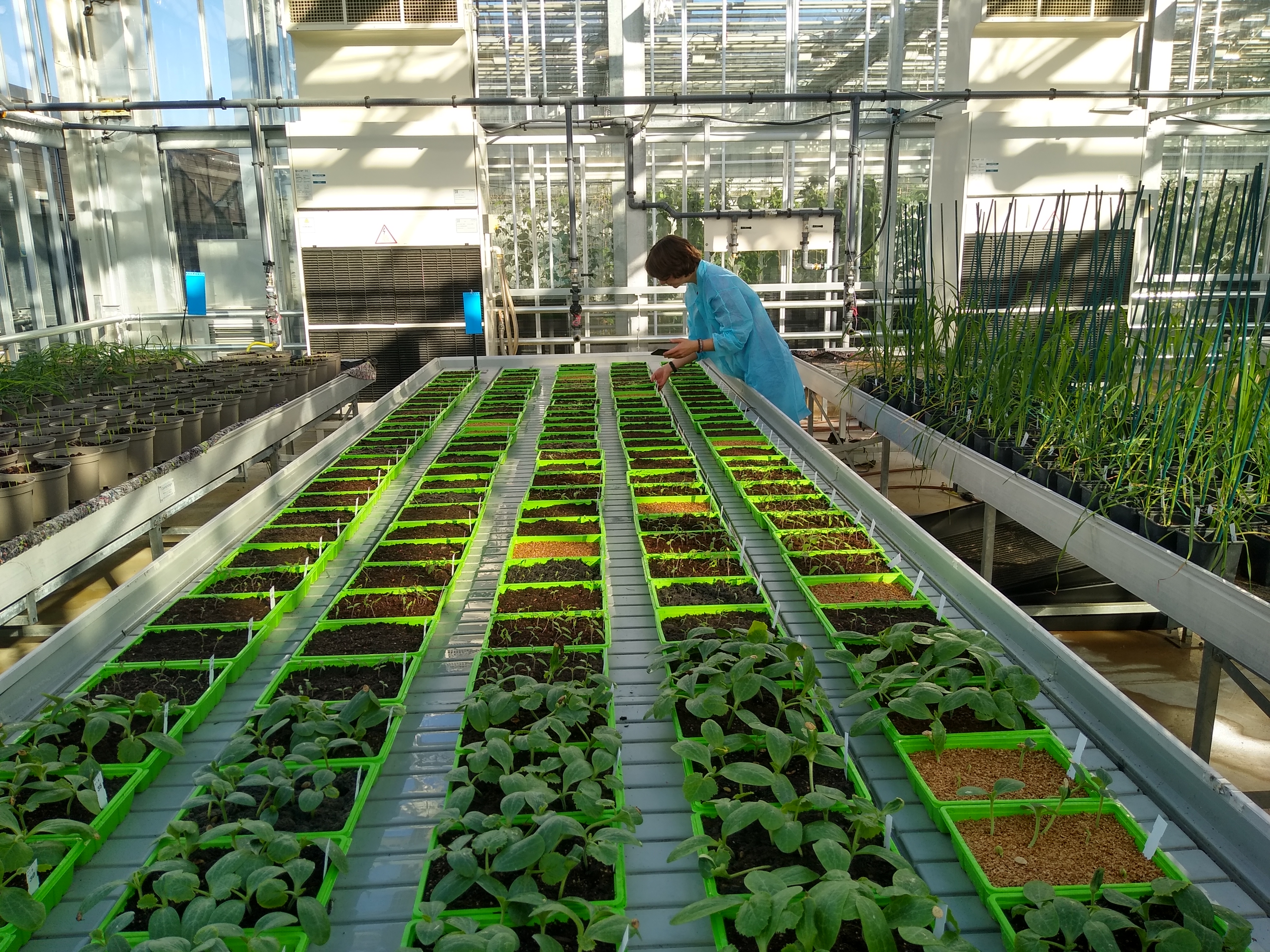
Figure 6. Propagation trial evaluating the development of peat free seed and cutting compost
The extensive glasshouse facilities at Cambridge and East Malling, in Kent, offer a range of specifications, presenting good commercial growing standards and offering controlled conditions and uniformity of environment. Trials can be established in basic heated areas or heated with supplementary lighting, as well as the option for outdoor hard standing areas fully equipped with automated drip or overhead irrigation (Figure 5).
NIAB runs a range of trials looking at seed and cutting composts for propagation (Figure 6), indoor growing medias for house plants, general purpose and specialist growing medias for all bedding and hardy nursery stock plants.
This article originally appeared in the Autumn 2023 edition of NIAB’s Landmark magazine. Landmark features in-depth technical articles on all aspects of NIAB crop research, comment and advice. You can sign up for free and get Landmark delivered to your door or inbox:





